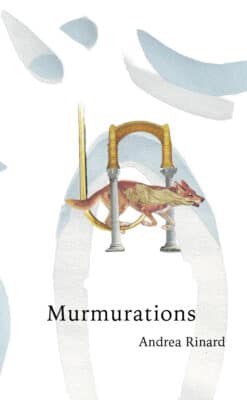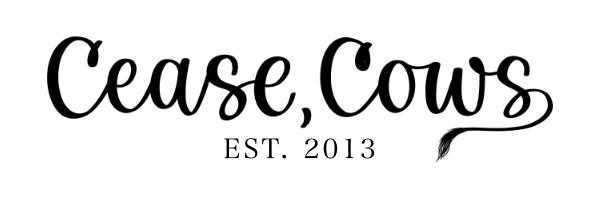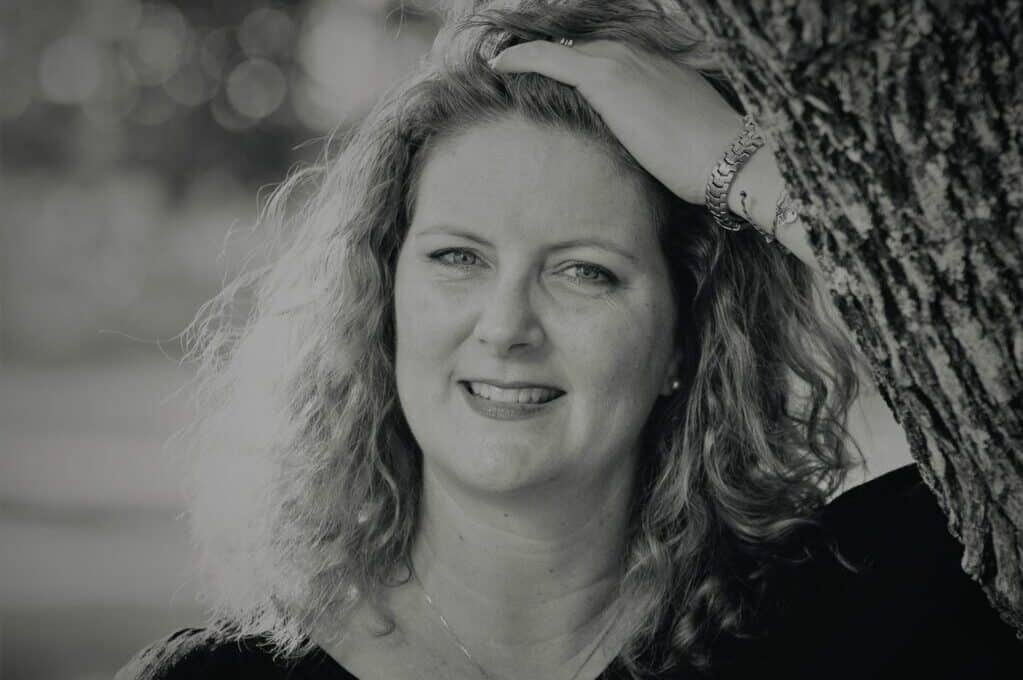Longtime Cease, Cows readers should remember “Lovebugs,” Andrea Rinard’s emotional story of a girl striving for peer acceptance. Rinard’s new collection, Murmurations, published by EastOver Press, showcases her skill at finding meaning in the everyday objects of life. Rinard excels at inhabiting her characters’ interior lives; her stories are concise, compelling, and linger in a reader’s heart long after the ending. If you enjoyed “Lovebug,” you’ll love Murmurations.
Purchase your copy here.

Rinard shared her thoughts in a recent interview with Cease, Cows.
Chuck Augello: How would you describe Murmurations to a potential reader?
Andrea Rinard: It’s a collection of bite-sized stories about women and girls and the roles they play—willingly and unwillingly–in the world.
CA: The lead story, “Lovebugs”, was published by Cease, Cows. It’s a heartbreaking story about unrequited love. What was its initial inspiration?
AR: I was a high school teacher for many years, and I was always drawn to the kids who didn’t quite fit into a social group. What was always so poignant for me were the kids who nevertheless desperately coveted relationships with those who least wanted their company. I think Maddi and Anna are both iconic in their own ways and recognizable to readers. I also liked framing the entire story within Anna’s internal monologue, something I think is a very relatable human tendency. I think we all imagine the life we’re not living, thinking how if only this one person would see them for who they truly are, everything would change, be better. Unfortunately, we also tend to pick the people least likely to have the eyes and hearts to see us, let alone appreciate us.
CA: In “Found Things,” Jane and Hank help their son as he leaves for college. As a writer, how do you approach a commonplace experience like that and transform it into a compelling story that draws the reader in?
AR: I love trying to elevate mundane moments. It’s in those experiences that we are our most human and our most vulnerable, so I like to explore those spaces with characters. I usually start with a key detail, like a stuffed manatee or a handful of boxer shorts, to capture the emotion of an experience and suggest meaning. I sometimes struggle to maintain a light touch, but if I can find the sweet spot and not belabor the details, I think the story can take on powerful sub-text that makes the commonplace more extraordinary.
CA: The story “Monster” was a particular favorite. The narrator, Mandy, casts a sharp, critical eye at the world around her and finds her life lacking compared to the popular movie scenes she’s frequently recalling. It’s a complex psychological portrait. Tell us about its genesis.
AR: This is a favorite of mine too. I wanted to create an anti-hero, a girl who is clearly not nice but is nonetheless interesting, and maybe even relatable. Mandy is a character who grabbed me by the wrist, none too gently, and dragged me through her story, insisting she was far more complex and sinister than I first imagined. It was fun to infuse allusions to music and movies as I constructed Mandy’s interior world. I’m Gen X, and the movies of the 80s, especially John Hughes’s canon and everything starring John Cusack, did a lot to build my ideas about beauty, relationships, and how the world is supposed to work. The whole story was born in a Craft of Fiction class in which each person wrote a short story, using the same hotel as a setting. I think I freaked out my classmates with where I took it, but I owe huge thanks to our professor, Jake Wolff, for encouraging me to keep winding Mandy up tighter and tighter and see where she’d go.
CA: Was there a particular story in Murmurations that was most challenging to write? Do you have a favorite among them that you think best encapsulates your work?
AR: I think the most challenging one was “Entropy.” It was born in a Kathy Fish workshop, and the prompt was to employ repetition. I knew what I wanted to do in terms of creating a character experiencing some kind of mental health crisis, but it was really difficult to get the voice where I wanted it and make the repetition and the subtle shifts in each section suggest the passing of time and the changes in the narrator’s state of mind. It was also tempting to bring the mother forward and give her more of a role, but I ultimately made the choice to keep her as a figure that merely appears and disappears in the doorway. I fiddled with this story a lot, coming back to it again and again to tweak. I like how it turned out, and it’s the story I’ve gotten the most responses to from readers, so I’m glad I stuck with it.
“Delayed Combustion” is a favorite of mine, and I think it strongly represents my process and interests as a writer. I tend to begin writing with what I think of as a portal idea—an image, a metaphor, or a conflict, for example. For this story, it was the memory of a book of oddities my parents had when I was young. There was a section about spontaneous combustion that fascinated me, and I speculated about what would happen if people knew the potential and learned to control it until they wanted to “let it rip.” I also love playing with family dynamics and seeing generations in interaction, so this story was a lot of fun to write, and I love reading it aloud.
CA: Many of the stories are only a few pages in length. What draws you to write flash fiction?
AR: Flash is a gorgeous and challenging form. It’s beautiful because it is so zoomed in, yet there is a lot suggested about the characters’ lives, worlds, and interior beings. It’s challenging because there is nowhere to hide in a flash—no throat-clearing or wheel-spinning. Every image, every action, every word must serve the purpose of the story, so it’s a wonderful form to use to grow and develop as a writer. Flash is also a wonderful little playground to try things for my longer works. I can audition characters and conflicts, try out techniques, and explore backstory that has no place in a manuscript. “Tuesday” is an example of a flash piece that was born when I used the page to get to know two characters from a novel work-in-progress.
CA: What was the last book that you read that you really loved?
AR: I had Hamnet by Maggie O’Farrell on my TBR pile for a couple of years and just fell into it last week. I had to force myself to slow down and savor it. For a Shakespeare nerd like me, it’s delicious catnip, but it’s also a powerful story about family dynamics, motherhood, marriage, and grief, all themes that interest me.
CA: There’s no shortage of ways to spend one’s time. Why do you choose to write?
AR: I spent too much of my life not writing. I’ve had stories knocking around in my brain my whole life, but when I tried to get them on the page, they were never satisfying. I have a whole graveyard of first chapters in my computer files. It’s only been in the past eight or so years that I realized not only how much I needed to learn about writing but also how much I could learn. Taking classes and devoting myself to the craft of writing has been an amazing experience. I guess I write the way some people paint or climb mountains or knit sweaters: I want to push myself to finish things and, hopefully, find beauty along the way.
–
Chuck Augello (Contributing Editor) is the author of The Revolving Heart, a Best Books of 2020 selection by Kirkus Reviews. His work has appeared in One Story, SmokeLong Quarterly, Literary Hub, The Coachella Review, and other fine journals. He publishes The Daily Vonnegut, a website exploring the life and art of Kurt Vonnegut. His novel, A Better Heart, was released in November 2021.
Andrea Rinard is a former long-time English teacher and now full-time student in the University of South Florida’s MFA program. Her YA manuscript won the Key West Literary Seminar’s 2020 Marianne Russo Award for a novel-in-progress. She was nominated for Best of the Net in 2020 and 2021 and Best Small Fictions in 2020 for her flash fiction and has work in such places as Cease, Cows, The Jellyfish Review, Lost Balloon, and X-R-A-Y. A native Floridian who wears shoes against her will, Andrea lives in Tampa in what would be an empty nest if the kids would quit coming back. You can find her at www.writerinard.com and on Twitter @aprinard.

